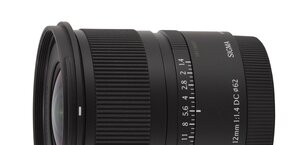Sigma 18-250 mm f/3.5-6.3 DC OS HSM
8. Vignetting

For a difficult combination of the wide angle and the maximum relative aperture the brightness loss in the frame corners reaches a significant value of 38% (-1.37 EV). How the Sigma compares here with its competitors? It fares very much alike. The Tamron 18-270 mm VC had a result exactly the same here; that of the Nikon 18-200 mm was also similar. The Tamron 18-250 mm fared a bit better, showing values at the level of 33%.
Please Support UsIf you enjoy our reviews and articles, and you want us to continue our work please, support our website by donating through PayPal. The funds are going to be used for paying our editorial team, renting servers, and equipping our testing studio; only that way we will be able to continue providing you interesting content for free. |
- - - - - - - - - - - - - - - - - - - - - - - - - - - - - - - - - - - - - - - - - - - - - - - -
When we stop down the aperture to f/4.0 the light fall-off in the corners will be slightly lower, amounting to 32% (-1.12 EV). Only by stopping down to f/5.6 we can make the problems less visible because the vignetting is 19% (-0.61% EV) there. Unfortunately any further stopping down has little effect. By f/8.0 and f/11 the vignetting remains 18%.
With the increase of the focal length the vignetting problems decrease very swiftly. Near 30 mm focal length and at the maximum relative aperture (f/4.0) this aberration reaches 20% (-0.65 EV) and it becomes almost imperceptible by f/5.6 where it gets to 12% (-0.37 EV).
At 50 mm the performance is even slightly better. At the maximum relative aperture the vignetting is 18% (-0.58 EV) and it decreases to 13% by f/5.6. By f/8.0 it is completely invisible, amounting to just 8%.
Any further increase of focal lengths makes the vignetting problems increase too. Near 100 mm focal length and by f/5.6 the brightness loss in the frame corners reaches the level of 27% (-0.91 EV). Fortunately by f/8.0 this aberration disappears almost completely (11%). At 180 mm focal length the situation is very much alike – at the maximum aperture (f/6.3) the vignetting is 28% (-0.96 EV) and it decreases to 15% by f/8.0. By f/11 it already becomes imperceptible (7%).
At the maximum focal length the level of this aberration is even higher. By f/6.3 the vignetting reaches 30% (-1.05 EV) and it decreases to 15% by f/8.0. Applying f/11 makes the level of this aberration drop to a quite negligible value of 7%.
 |
 |
 |






